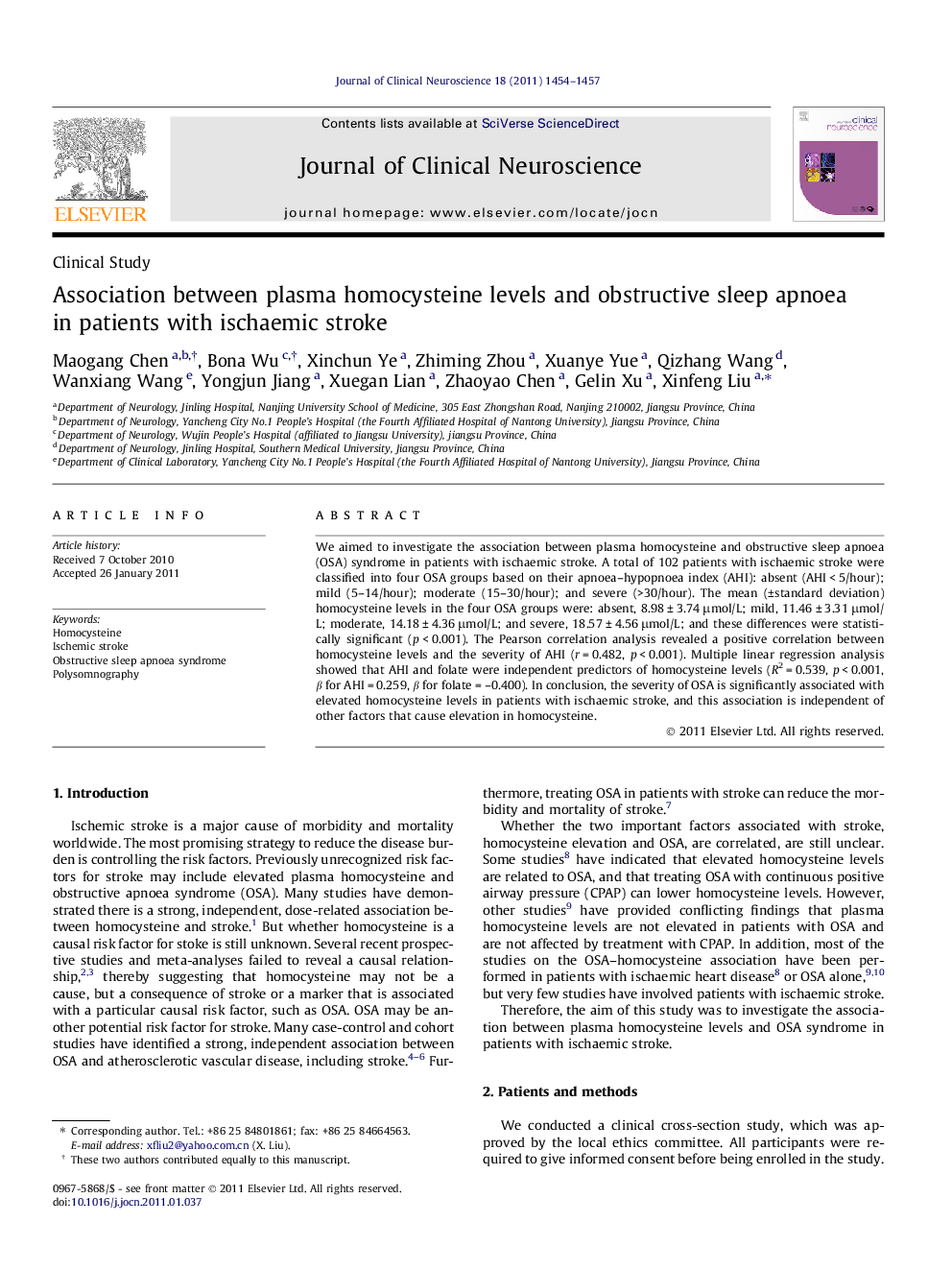| Article ID | Journal | Published Year | Pages | File Type |
|---|---|---|---|---|
| 3060612 | Journal of Clinical Neuroscience | 2011 | 4 Pages |
We aimed to investigate the association between plasma homocysteine and obstructive sleep apnoea (OSA) syndrome in patients with ischaemic stroke. A total of 102 patients with ischaemic stroke were classified into four OSA groups based on their apnoea–hypopnoea index (AHI): absent (AHI < 5/hour); mild (5–14/hour); moderate (15–30/hour); and severe (>30/hour). The mean (±standard deviation) homocysteine levels in the four OSA groups were: absent, 8.98 ± 3.74 μmol/L; mild, 11.46 ± 3.31 μmol/L; moderate, 14.18 ± 4.36 μmol/L; and severe, 18.57 ± 4.56 μmol/L; and these differences were statistically significant (p < 0.001). The Pearson correlation analysis revealed a positive correlation between homocysteine levels and the severity of AHI (r = 0.482, p < 0.001). Multiple linear regression analysis showed that AHI and folate were independent predictors of homocysteine levels (R2 = 0.539, p < 0.001, β for AHI = 0.259, β for folate = –0.400). In conclusion, the severity of OSA is significantly associated with elevated homocysteine levels in patients with ischaemic stroke, and this association is independent of other factors that cause elevation in homocysteine.
